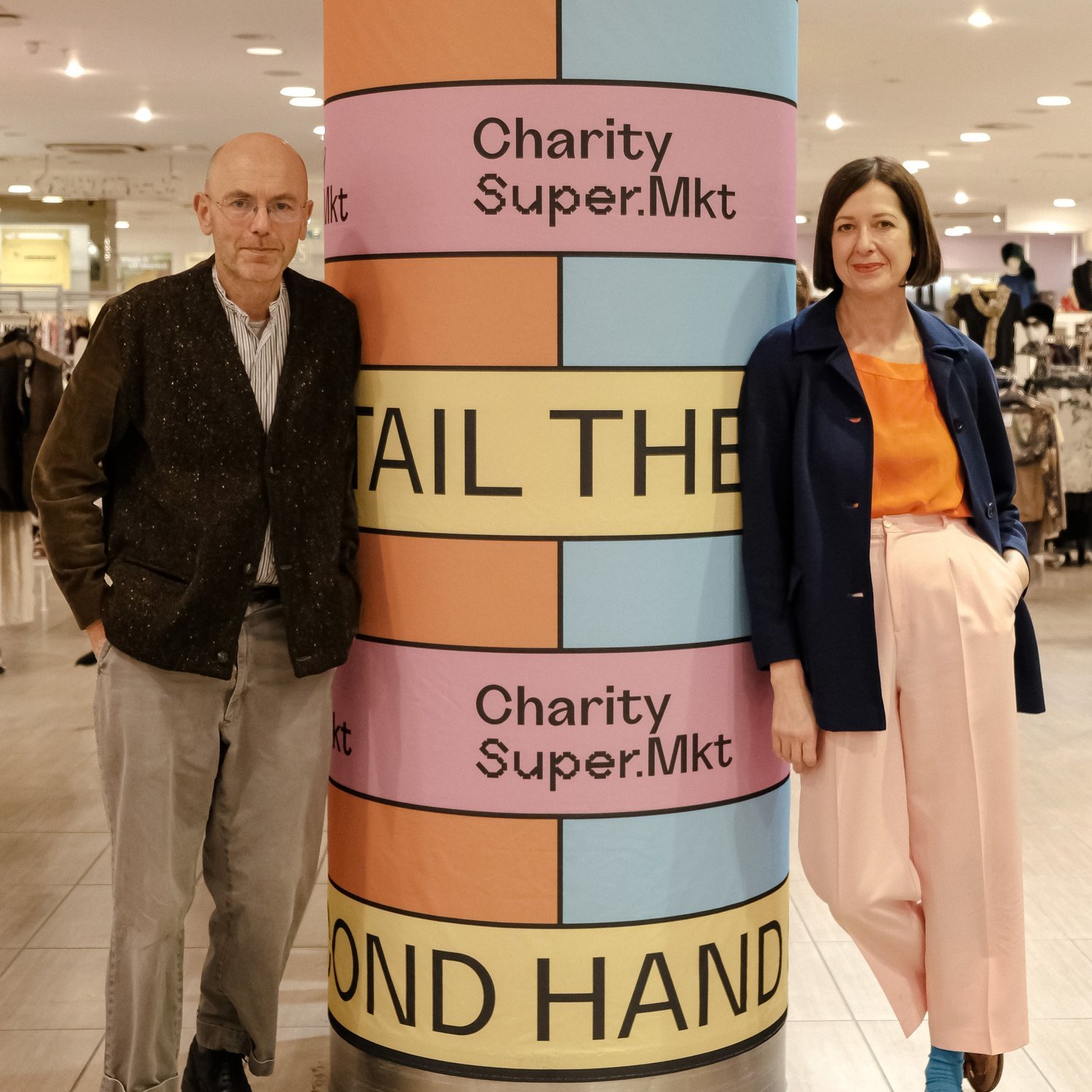Foraging for vintage fashion this February

Photo: Charity Super.mkt (via Instagram)
I didn’t realise I wanted a sherbet yellow fluffy jumper until it was staring me in the eye. I’d not considered possessing such a garment, until it was in my hands: yellow, fuzzy and enticing. At only £2.95 in an RSPCA charity shop, that Big Bird ball of fun became one of winter’s most-worn sweaters bringing some much-needed playfulness to the dreary months.
There’s a lot to be said for fashion foraging.
Although I have a clear idea of the classic pieces I commonly wear, I always leave space for the serendipitous encounter. We might know what we need but don’t always know what we want, until it finds us. Or, we find it. Like bargain-hunters, thrifters or rummagers, the fashion forager will quest for the undiscovered gem and is prepared to invest considerable time in this illusive hunt.
Jade Halbert, a Glasgow-based fashion historian and lecturer is a seasoned style hunter and believes a combination of visual and haptic skills are necessary for effective foraging. ‘First, you need to ‘get your eye in’ and identify potentially winning items by print, cut or embellishment. I can run my hand along a charity shop rail and distinguish the quality linen, cashmere, silk or cotton items from the poorer quality pieces.’

Vintage shoes. Photo: Charity Super.mkt
The fast fashion revolution has had a detrimental knock-on effect on the overall quality of clothing in charity shops. Many are now flooded with cheap cast-offs, not necessarily old but poorly made from cheap fabrics. In order, to create clothes at these prices, you have to consider the potentially dubious working conditions of the garment makers which may include children. The thought is not conducive to happy shopping.
The fashion forager thrives in certain environments: jumble sales, junk shops, yard sales, markets, boot fairs, clothes swap parties, kilo shops etc., anywhere that hasn’t been merchandised to death and invites a sense of discovery; anywhere that doesn’t do all the thinking and finding for you. On the high street and aside from the second-hand sector, discount outlets like TK Maxx or designer villages are also siren calls to the wily forager.
The treasure hunt principles can also be applied in an online context. ‘Vinted is great because the emphasis is more on wardrobe clearing than profit-chasing so prices are more reasonable,’ enthuses Halbert who found a vintage camel John Galliano jacket on Vinted for £30. Colette Bardell, an Ayurvedic Consultant seeks out accessories on eBay and recently found a silver crochet beret for a fiver. ‘You really have to focus online. It’s easy to get distracted.’

Photo: Allison Christine from Unsplash
With cheap price tags, the temptation to splurge is strong but likely to be a false economy. In these environments of plenty, whether physical or online, more discernment is required, not less. The mindful forager is just as likely to come away empty-handed and would prefer this to a basket of tat that will sit, equally unloved, in a dark wardrobe.
Bardell continues, ‘I always check for flaws like holes, stains or missing buttons. If the garment is damaged, I ask myself, ‘can it be repaired or upcycled?’ Other key questions to weigh up the tat or treasure conundrum are: Is it something I can wear immediately? How will it work with the rest of my wardrobe? Does it fit properly? What is the quality and make like? Bargain or not, you want the piece to work for you and to last.
‘Foraging is a challenge and adventure and keeps me focused on quality and fit rather than the latest trends,’ adds Halbert. HR Advisor, Zoe Michael believes ‘buying something unique and cheap can be a real kick and therapeutic plus it’s sustainable so, I also feel like I’m doing my bit for the environment.’ When you find a wonderful surprise via foraging, something you hadn’t really considered before, it’s a similar thrill to discovering a new musician on Spotify. Leaving space for chance encounters needs an open mind and a willingness to embrace the unexpected.
Happy foraging!
Nilgin Yusuf is a freelance writer and regular TNMA contributor.

Wayne Hemingway and Maria Chenoweth
SECOND-HAND STYLE NOTE: London Foragers, don’t miss the Charity Super.mkt.
Designer Wayne Hemingway and CEO of Traid Maria Chenoweth have joined forces to create a ‘ charity shop department store’ in the former TopShop at Brent Cross Shopping Centre. The 10 charities involved, include: Age UK, Traid, Shelter, Barnardo’s and Cancer Research, and the supermarket is open until 12 March 2023. More details HERE.
Loved this article